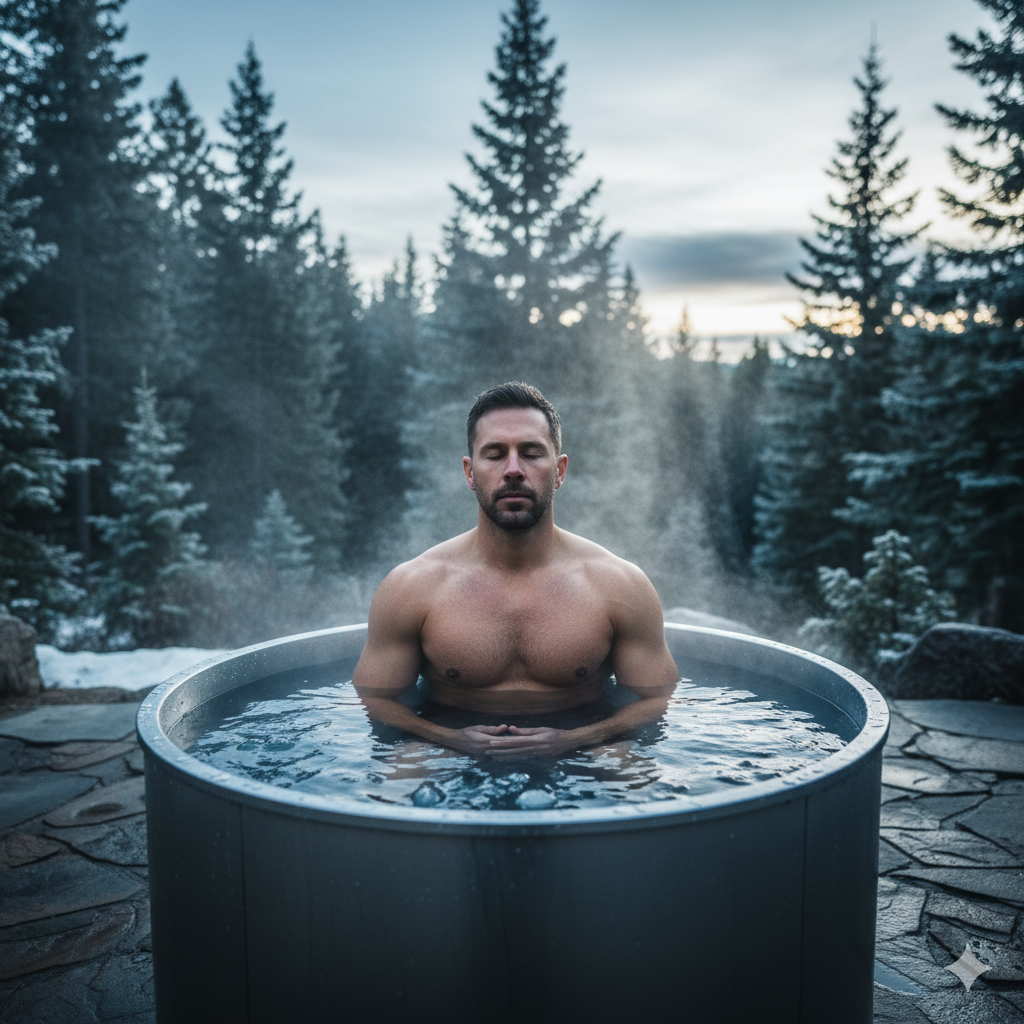Cold plunging, also known as cold water immersion or cold therapy, is the practice of deliberately submerging the body in water that is 59∘F (15∘C) or colder for a short period, typically between one and five minutes. Once a practice reserved for elite athletes, it has exploded into mainstream wellness as a simple yet powerful tool for physical and mental health.

The Mechanics of the Chill: What Happens in the Water
When your body is suddenly exposed to cold water, it triggers an immediate and dramatic physiological response known as “cold shock.”
- Vascular Compression: Blood vessels near the skin constrict (vasoconstriction) to redirect blood flow to your core, protecting vital organs and maintaining internal temperature.
- Increased Heart Rate & Breathing: There’s an initial gasping reflex, a sharp rise in heart rate, and hyperventilation as the body goes into a sympathetic (fight-or-flight) state.
- The Counter-Response: As the initial shock subsides, the body learns to manage this stress. Regular exposure helps train the parasympathetic nervous system (rest-and-digest) to activate more quickly, improving the body’s overall resilience to stress—both physical and psychological.
Key Health Benefits: The Cold Plunge Payoff
The growing popularity of cold plunging is driven by several documented and perceived health benefits:
- Muscle Recovery and Reduced Inflammation: The cold immediately constricts blood vessels, which helps flush metabolic waste products (like lactic acid) out of muscle tissue. Upon exiting the water, blood flow rushes back, aiding in nutrient delivery and reducing post-exercise muscle soreness (Delayed Onset Muscle Soreness, or DOMS).
- Boosted Mood and Mental Health: The shock causes a surge of endorphins and neurotransmitters like norepinephrine and dopamine (the “feel-good” hormone). Dopamine levels can stay elevated for hours after a plunge, leading to improved mood, focus, and energy. Regular practice is often cited as a powerful tool for managing symptoms of anxiety and depression.
- Enhanced Immune System Function: Research suggests that chronic, deliberate cold exposure may stimulate the production of white blood cells, which are crucial for fighting off illness. This “training” of the immune system can potentially lead to a stronger defense against common sicknesses.
- Improved Metabolic Health: Cold exposure activates brown fat (brown adipose tissue), which burns energy to generate heat. Activating brown fat is linked to improved insulin sensitivity and may play a role in healthy weight management.
Getting Started Safely
While the benefits are significant, cold plunging must be approached cautiously, especially for beginners or those with pre-existing conditions.
- Consult a Doctor: Individuals with heart conditions, high blood pressure, or cold-related medical issues should always seek medical advice before starting.
- Temperature and Time: Begin with short durations (30 seconds to 1 minute) and water that is challenging but manageable (e.g., 55∘F or 13∘C). The general recommendation for experienced plungers is 39∘F to 53∘F (4∘C to 12∘C) for two to four minutes.
- Focus on Breath: Controlled, slow breathing is the most effective tool to override the initial panic of the cold shock.
- Warm Up Slowly: Do not immediately take a hot shower after a plunge. Air dry, dress in warm layers, and allow your body to rewarm naturally to prolong the metabolic benefits.
Leave a Reply